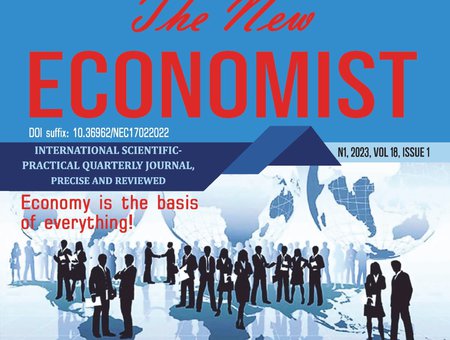References:
1.Denhart R, Denhart J, Public Management; Tb. 2012
2.Nelson B, Economist, Management made easy; Tb. 2015
3.Robbins S, Judge T, Foundations of Organizational Behavior; Tb. 2009;
4.Branch, S., Ramsay, S., & Barker, M. (2012). Workplace bullying, mobbing and general harassment: A review. International Journal of Management Reviews. Retrieved from http://onlinelibrary.wiley.com/doi/10.1111/j.1468-2370.2012.00339.x/abstract
5.Davenport, N., Distler-Schwartz, R., & Pursell-Elliott, G. (1999). Mobbing: Emotional abuse in the American workplace. Ames, IA: Civil Society Publishing
6.Einarsen, S., Hoel, H., Zapf, D., & Cooper, C. (2003). The concept of bullying at work: The European tradition. In S. Einarsen, H. Hoel, D. Zapf, & C. Cooper (Eds.), Bullying and emotional abuse in the workplace: International perspectives in research and practice (pp. 3–30). New York, NY: Taylor & Francis.
7.Folger, R., & Skarlicki, D. R. (2004). Beyond counterproductive work behavior: Moral emotions and deontic retaliation versus reconciliation. In S. Fox & P. Spector (Eds.), Counterproductive work behavior: Investigations of actors and targets (pp. 83–105). Washington, DC: American Psychological Association.
8.Hershcovis, M. S. (2011). “Incivility, social undermining, bullying…oh my!”: A call to reconcile constructs within workplace aggression research. Journal of Organizational Behavior, 32, 499–519
9.Hutchinson, M., Vickers, M. H., Jackson, D., & Wilkes, L. (2006). Like wolves in a pack: Predatory alliances of bullies in nursing. Journal of Management and Organization, 12, 235–251.
10.Hutchinson, M., Vickers, M. H., Jackson, D., & Wilkes, L. (2010). Bullying as circuits of power: An Australian nursing perspective. Administrative Theory & Praxis, 32, 25–47.
11.Khoo S. Academie Mobbing: Hidden Heath Hazard at Workplace // Journal Malays Fam Physician, 2010, no. 5(2), pp. 61-67. https://www.ncbi.nlm.nih.gov/pmc/articles/PMC4170397/
12.Kovacic A., Podgornik N., Pristov Z., Raspor A. Mobbing in a Non-Profit Or ganisation.-Research Papers // De Gruyter, 2017, no. 2, pp. 178-186. https://www.researchgate.net/publication/318131446_Mobbing_in_a_Non-Profit_Organisation
13.Kunzmann K., Thellacker E. Mobbing am Arbeitsplatz // Personalwirtschaftlichen Schnitt. https://www.ssoar.info/ssoar/bitstream/handle/document/76706/ssoar-2021-reimer_et_al-Prejudices_and_procedures_for_dealing.pdf?sequence=1&isAllowed=y&lnkname=ssoar-2021-reimer_et_al-Prejudices_and_procedures_for_dealing.pdf
14.Lehmann R. Charismatische Un ternehmungsführung. Band 91. Schriftenreihe des Instituts für betriebswirtschaftliche Forschung an der Universität Zürich. Haupt, 2002. https://netlibrary.aau.at/obvuklhs/content/titleinfo/2412123/full.pdf
15.Litzcke S. et.al. Stress, Mobbing und Burn-out am Arbeitsplatz. Berlin Heidelberg, Springer Verlag, 2013. https://docplayer.org/41887885-Stress-mobbing-und-burn-out-am-arbeitsplatz.html
16.Lorenz K. Über tierisches und menschliches Verhalten. Aus dem Werdegang der Verhaltenslehre. Gesammelte Abh andlungen Bd. I und II. Piper, 1965, München. http://klha.at/papers/1950-GanzheitTeil.pdf
17.Meschkulat B., Stackelbeck M., Langenhoff, G. Der Mobbing-Report. Eine Repre sentativstudie für die Bundesrepublik Deutschland. Dortmund, Berlin, 2002, p. 70. https://www.ssoar.info/ssoar/bitstream/handle/document/76706/ssoar-2021-reimer_et_al-Prejudices_and_procedures_for_dealing.pdf?sequence=1&isAllowed=y&lnkname=ssoar-2021-reimer_et_al-Prejudices_and_procedures_for_dealing.pdf
18.Meyers großes Taschenlexikon: in 24 Bänden hrsg. und bearb. von Meyers Lexikon redaktion. Bi-Taschenbuchverl. Mannheim; Leipzig; Wien; Zürich. 1995, Bd. 4, p. 320.
19.Niedl K. Mobbing and well-being: Economic and personnel development implications // European Journal of Work and Organizational Psychology, vol. 5(2), 1996, pp. 239-249.
20.Ramsay, S., Troth, A., & Branch, S. (2011). Workplace bullying through the lens of social psychology: A group level analysis. Journal of Occupational and Organizational Psychology, 84, 799–816.
21.Salin, D. (2003). Ways of explaining workplace bullying: A review of enabling, motivating, and precipitating and enabling. Human Relations, 53, 1213–1232.
22.Shallcross, L., Ramsay, S., & Barker, M. (2010). A proactive response to the mobbing problem: A guide for HR managers. New Zealand Journal of Human Resources Management, 10, 27–37.




